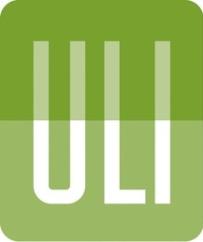In Urban Land Magazine, Bianca Clarke and Jennifer Yip of the Trust for Public Land present new studies on the economic benefits of park investment. Drawing on case studies from multiple cities, they show that parks are not just community amenities but essential drivers of economic growth. Parks help attract firms and mobile workers in the age of remote work, fueling thriving business communities and boosting real estate growth at rates that surpass the national average. Ultimately, the authors argue that investing in parks is a strategic tool for promoting prosperity, competitiveness, and long-term urban vitality. Read our excerpt below:

"Data shows that investments in parks aren’t just public goods—they’re also profit drivers that can significantly enhance property values, attract businesses, and create long-term asset appreciation." -Bianca Clarke, Jennifer Yip
A New Playbook
A new study by Trust for Public Land and HR&A Advisors has revealed what urban planners and city leaders are increasingly discovering: Public parks aren’t just amenities—they’re powerful economic engines that can drive city growth, attract talent, and boost local economies.
The traditional economic development playbook for cities focuses on tax incentives and infrastructure projects. In an era when remote work has given employees unprecedented freedom to choose where they live, however, the equation has changed dramatically. Cities now compete for talent, based on quality of life, and parks have emerged as a crucial factor in this calculation.
The evidence is compelling. The Trust for Public Land’s analysis of five diverse cities—Boise, Plano, Minneapolis, Boston, and Atlanta—shows that these urban centers spend three to six times more per acre on parks than does the average among America’s 100 largest cities. This investment has paid off. Between 2011 and 2021, all five cities experienced job growth rates at or around the national average.
Particularly striking is the growth in young firms. Cities such as Plano, Boise, and Atlanta have become magnets for entrepreneurs and startups, with exceptional growth rates for companies five years old or newer. Boise has undergone 60 percent growth in firms of these kinds, compared to 12 percent nationally. This surge in young businesses accompanies these cities’ commitment to developing and maintaining high-quality public spaces—a key piece of attracting the highly educated, young workforce that businesses need to grow and thrive.
“It’s always about the ability to attract talent,” said Scott Schoenherr, a partner at Boise real estate developer Rafanelli and Nahas. “Can I hire an appropriate level of talent in Boise? If we keep downtown great, we will get great talent, and the companies will follow.”
Rafanelli and Nahas worked with the city of Boise for more than a decade to build the Cherie Buckner-Webb park adjacent to the firm’s building at 11th and Idaho, the largest Class-A office development in downtown Boise. The park has been a major success, and the surrounding Westside neighborhood continues to net new investments from other private developers.
Economic Benefits
The impact extends well beyond job creation. Cities that have invested in parks are experiencing a real estate boom, with housing and office development outpacing national averages. Real estate brokers report that proximity to green space has become a leading requirement for commercial tenants, even as residential developments near parks command premium prices.
Atlanta is investing significantly in urban trails and greenways that prioritize walkability, connectivity, and proximity to transit. Well-known linear park projects, such as the Atlanta Beltline, have attracted more private investment to Atlanta: Office rents along the Beltline increased by 70 percent from 2013 to 2019, outpacing offices throughout the rest of the city by 35 percent.
The economic benefits of park investments must be managed carefully to ensure equitable development. Cities such as Boston, Minneapolis, and Plano have demonstrated that it’s possible for them to grow both in size and diversity while significantly investing in parks. Efforts across numerous cities illustrate various approaches. Atlanta is using tax increment financing and inclusionary zoning along the Beltline. Boston employs inclusionary zoning, community benefits agreements, and a commercial linkage fee that supports the Neighborhood Housing Trust. The city’s Franklin Park Action Plan identified additional anti-displacement strategies during the planning process. These anti-displacement strategies, alongside other regulatory and programmatic tools, are crucial for ensuring that all residents experience the benefits of parks.
The message is clear: Investing in parks is a crucial economic development and community prosperity strategy. From attracting new businesses and talent to stimulating real estate development and increasing the tax base, well-maintained public spaces deliver measurable returns on investment.
“Parkland is valuable to those who own real estate nearby, even if they are giving up a future income stream,” noted Jim Durrett, executive director of the Buckhead Community Improvement District in Atlanta. “They see doing that as lifting up everything else, including the properties that they already have.”
Data shows that investments in parks aren’t just public goods—they’re also profit drivers that can significantly enhance property values, attract businesses, and create long-term asset appreciation. When developers such as Rafanelli and Nahas in Boise dedicate valuable land to public spaces, they’re making strategic investments that can transform entire districts and catalyze further development. As cities continue to compete for mobile talent and businesses in the post-pandemic economy, developers who recognize and leverage the economic power of parks will be better positioned to create successful, resilient projects that deliver strong returns while contributing to vibrant urban environments.
The most successful cities are ones where government, business leaders, and philanthropists collaborate to support park development. With proper planning and resource allocation, building more parks can be a powerful economic catalyst that creates vibrant, thriving cities that, in turn, attract workers, businesses, and development opportunities.
Read the full article here and see the Trust for Public Land economic benefit reports here.
- Log in to post comments



